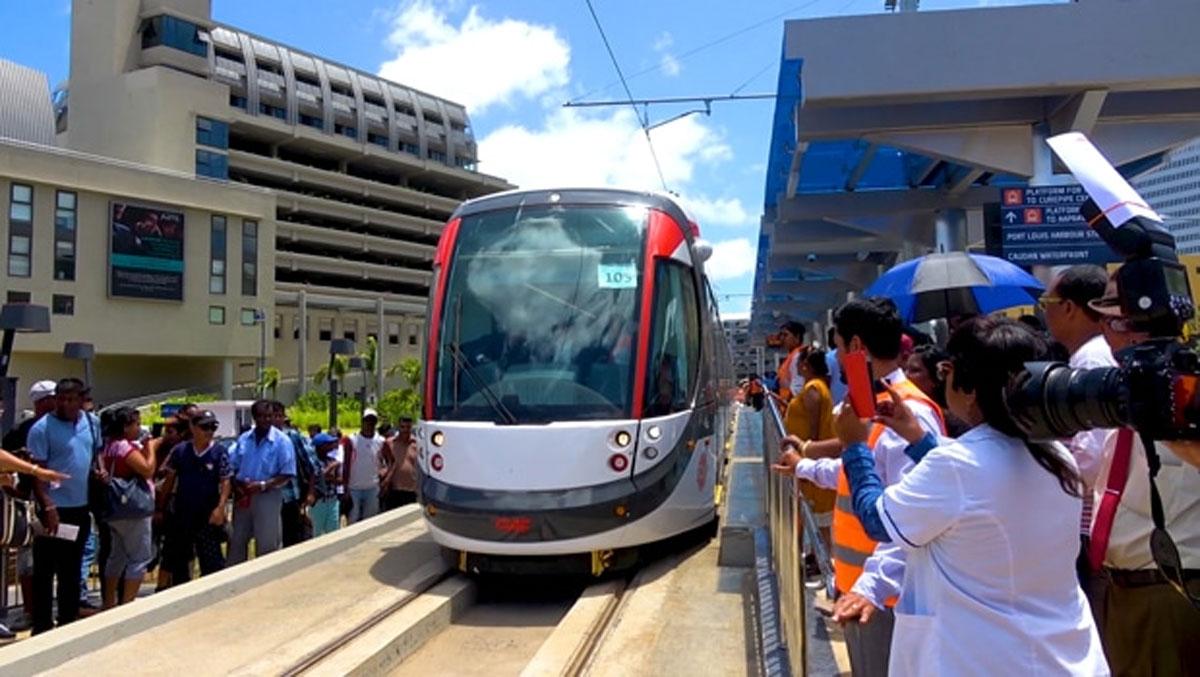Africa-Press – Mauritius. By all accounts, the eventful year that was 2022 will have left its marks on the collective memory and conscience of our compatriots and we went over some of those markers in the last issue of Mauritius Times.
Each one of us would have gauged those and many other events with his or her own prism and some may well have repercussions during 2023 or even much further.
Metro Express rides high?
Undoubtedly the completion of the tramway and its commercial operation before mid-October 2022, connecting the capital, Port-Louis, with Curepipe along the urban corridor of intense vehicle traffic, will be a feather in the cap of Metro Express Ltd (MEL), Larsen & Toubro and the MSM government which will rely on this as proof of its shining achievement.
If the case was so clear-cut, there would have been no reason for the MSM-ML-others to dilly-dally around the holding of municipal elections which have already been postponed since more than a year.
But if a 45-minute trip in air-con comfort for such a ride at a ticket price fixed at only some 10-15% above bus rates, is something that some 50,000 daily travellers can appreciate, we have by the same token to acknowledge that we are all now, like it or not, forced stakeholders and financiers of that infrastructure.
Beyond the generous contribution of India of some Rs 8-9 billion, which probably met the Port-Louis to Rose-Hill stretch, the rest of the financing of that capital investment we have to collectively assume even if repayments on that capital balance that keeps ballooning up with the announced extension to Cote d’Or, have not even started.
We understand that those will kick in as from 2024 thanks to the moratorium of a few years from India Inc. As stakeholders we are yet to be apprised of how those capital reimbursements will be met when our national coffers are running empty, taxes are on the high, critical other infrastructure financing (water in particular) are under abeyance and public debts are already mountainous.
The havoc and distress wrought by the pandemic have not caused any opportune rethinking or remapping of our infrastructure needs in a distressed economy or the priority accorded to the tramway line and its massive drain on scarce resources under difficult times.
As for repayments of interests on those loans and meeting all the management, maintenance and operational costs of running the tramway line, they will have to come from MEL’s revenues and, as at May 2022, we read that the accounts were in the red to the tune of some Rs 500 million, which was ascribed to daily ridership at some 40,000 not yet having attained then its maximum.
Whether another 20,000 or so daily travellers will shift MEL accounts out of the red remains doubtful unless we are provided with clearer evidence that such is indeed the case in the May 2023 accounts.
Otherwise, government will have to keep on subsidising MEL’s operational costs when it has not even started repayments on the capital loans extended by India.
As stakeholders of that venture, the authorities might deem it important to explain and document the real financial facts, figures, and forecasts to the population.
Most of them are not daily tramway riders but do not need the lack of transparency nor the gnawing feeling that they have been taken for a costly ride that they have yet to pay for.
Meantime, non-tram commuters have to face the daily havoc of a major infrastructure that has been placed so damnably onto our narrow streets and avenues.
With St Jean Road and Sivananda avenue carved up, times are stressed out for those who have to run their trucks, buses, vans, cars and motorcycles through the traffic nightmare as they ply to their trade and daily activities.
With the failure of the feeder buses concept, the lack of convenient secure parking at stations and the uncertainties around urban terminals, 2023 may not bring the urban population the relief they had been expecting.
Subsidiarily, it might be of some relevance if the authorities were to justify to the nation’s stakeholders why the tramway extension to the airport and Mahebourg, which would probably have whipped up development opportunities in many agglomerations (namely Mahebourg itself, the SSR Airport traffic, Plaine Magnien, Mare d’Albert, Union Park, Rose-Belle and Nouvelle France amongst others) that are now going to play second fiddle at the expense of the announced Cote d’Or extension.
We trust government MPs, PPS and Ministers along these stretches have been fully taken on board in the decision-making loop that ended up diverting the tram to the PM’s constituency and cherished village of Cote d’Or that would be completed by end 2024.
Did they raise or share some concerns about their own ‘mandants’, so unceremoniously tossed aside by a mighty pen? Don’t commuters from Mahebourg, Rose-Belle and the south generally and those moving to and from the national SSR airport deserve more explanations about that rationale and its financial justification when quite obviously ridership along a logical Curepipe – Airport – Mahebourg axis would have been far more substantial than the Cote d’Or to Reduit axis?
For More News And Analysis About Mauritius Follow Africa-Press







